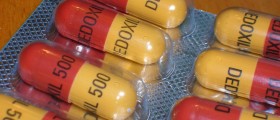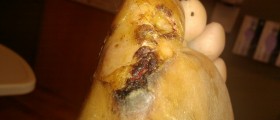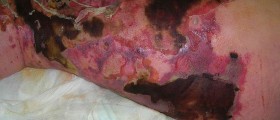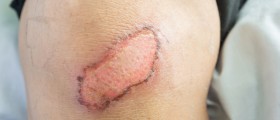
Staphylococcus bacteria, a facultatively anaerobic, Gram-positive coccus, cause the staph infections. These bacteria are commonly found on the skin or in the nose of even healthy individuals. Most of the time, these bacteria cause no harms or produce relatively trivial skin infections.
However, sometimes these skin infections progress to more severe stage, invading the bloodstream, urinary tract and internal organs. This kind of serious health conditions caused by staphylococcus bacteria is most common in already hospitalized people, especially in those with compromised immune systems, big open wounds or chronic diseases.
Infection
This quite common virus is detected in 11% to 32% of the general population. Hospital personnel have even higher rates of carriers, and approximately 25% of all hospital workers carries the virus in their bodies. These microorganisms are very resistant and they can survive on temperatures as high as 50°C, in high salt concentrations, and extreme drying. However, most of the carriers never develop staph infections.
Person may develop staph infection from bacteria that was already present in the body for some time. Otherwise, bacteria can be spread from person to person or from contaminated surfaces. Another source of transmission may be from food. As being greatly resistant to high temperatures, staphylococcus bacteria may survive the process of cooking.
Signs and symptoms
Staph infection causes a great number of symptoms that may vary from mild form extremely severe. Trivial skin problems, for example, are one of the mildest forms of staph infection. Folliculitis is a type of skin problems associated with staph infection, it starts as a small boil in a hair follicle or oil gland. The surrounding skin may become red and inflamed, draining pus. This kind of boils is most frequent under arms or around the buttocks.
Impetigo is another symptom of a staph infection. It is characterized by painful rash and formation of painful blisters that may drain fluid and develop thin yellow crust. This kind of skin rash usually develops around the nose or mouth.
Abscesses may also accompany a staph infection. These are warm furuncles filled with pus. The affected skin is red and swollen and may sometimes cause high fever, hypotension, chills and cellulitis skin infection.
Cellulitis refers to the skin infection in which skin tissue appears red and swollen. The skin may get the characteristic appearance of an orange peel. This kind of inflammation is most common in the lower legs and feet.
Toxic epidermal necrolysis, also known as the scalded skin syndrome, is most common in newborn babies. It is distinguished by high fever, skin rash and formation of blisters. Breaking of the blisters often causes removal of the top layer of skin and formation of burn-like red wounds.

















Your thoughts on this
Loading...